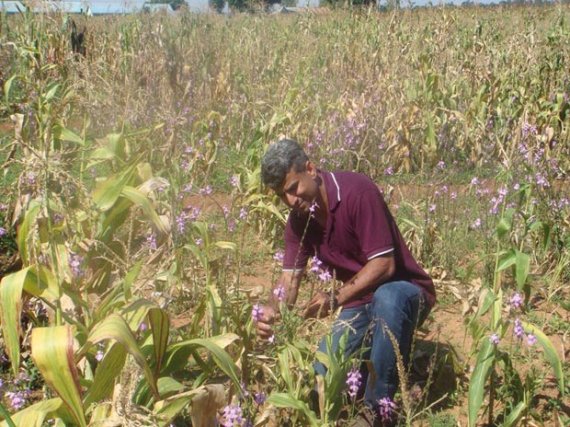It is estimated that striga endangers the food supply of about 300 million Africans. And yet it is possible, and even relatively easy to combat it, concludes PhD researcher Muhammed Jamil in his thesis. Combatting the weed seemed difficult up to now because it attaches itself to the soil on the roots of crops, keeping it invisible for a long time. The seed only germinates if there is a crop nearby. Jamil’s supervisor, Harro Bouwmeester, wants to find out how striga manages this. To do so, he is focusing on things called strigolactones, signal substances in the roots of the crop that activate the striga seed. Jamil shows with a range of experiments that the fewer strigolactones a crop produces, the less it is plagued by witches weed.
Cheap and simple
Bouwmeester had already demonstrated that the strigolactones in the plant are made from carotenes. So Jamil looked for substances that inhibit carotene without inhibiting the growth of the crop. He found a few herbicides which can inhibit the production of carotene. This led to a 60 to 75 percent reduction in the production of strigolactones by the crop and therefore of the germination of striga seed. If African farmers dose their crops with very low quantities of these pesticides, they will have a cheap and simple technique for combating the parasite, concluded Jamil.
Striga- resistant
Plant breeders could play a role too. Jamil researched various rice varieties, looking at their production of strigolactones and their degree of resistance to striga. He found two varieties which produced few signal substances and therefore suffered very little from striga. Breeders can now look for the genetic basis of these characteristics in order to develop striga-resistant varieties. Applying fertilizer, particularly phosphate, also helps to suppress striga, Jamil found, and the production of strigolactones plays a leading role here too. Exactly how this can be applied in the field is a question that requires further research, however. Muhammed Jamil will receive his PhD on 11 January from Harro Bouwmeester, professor of Plant Physiology.

